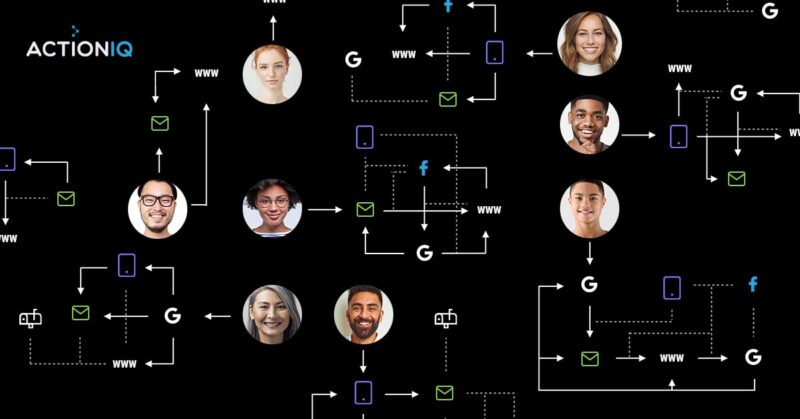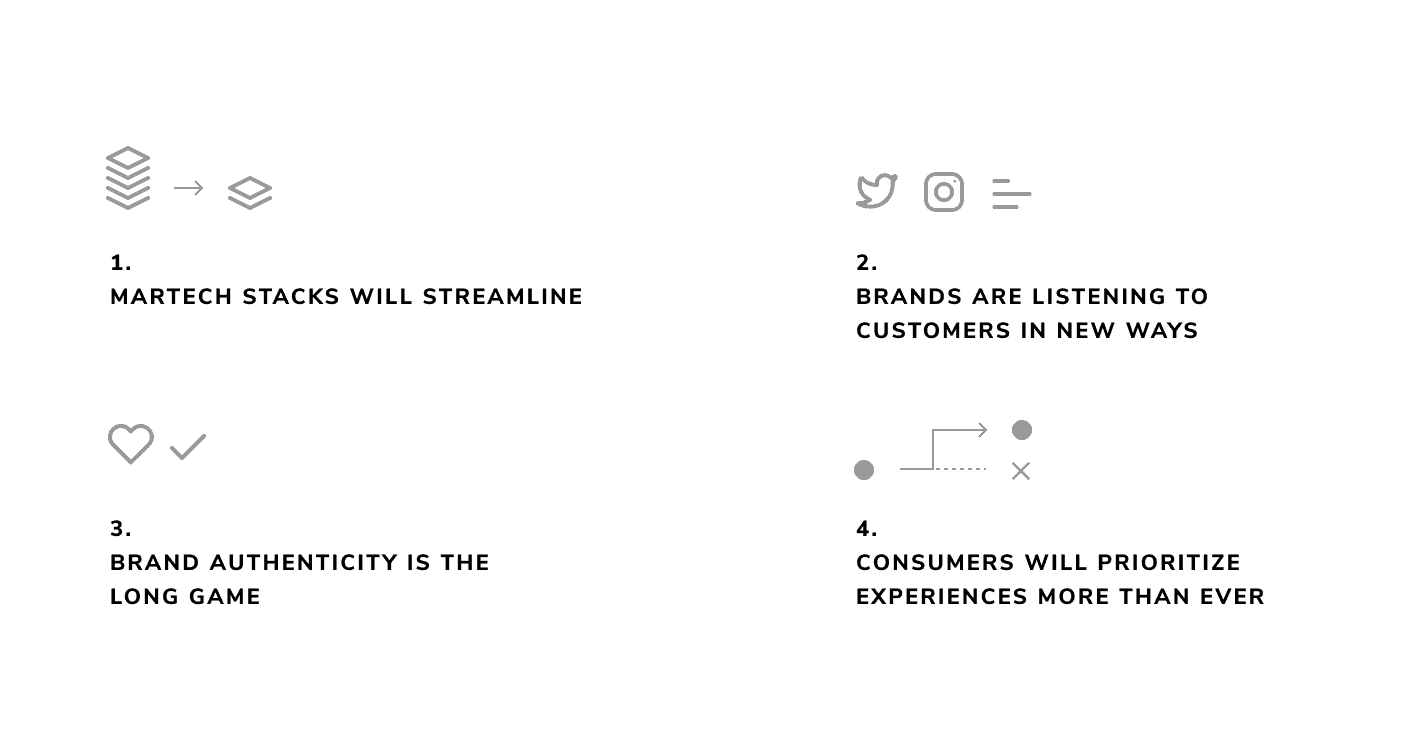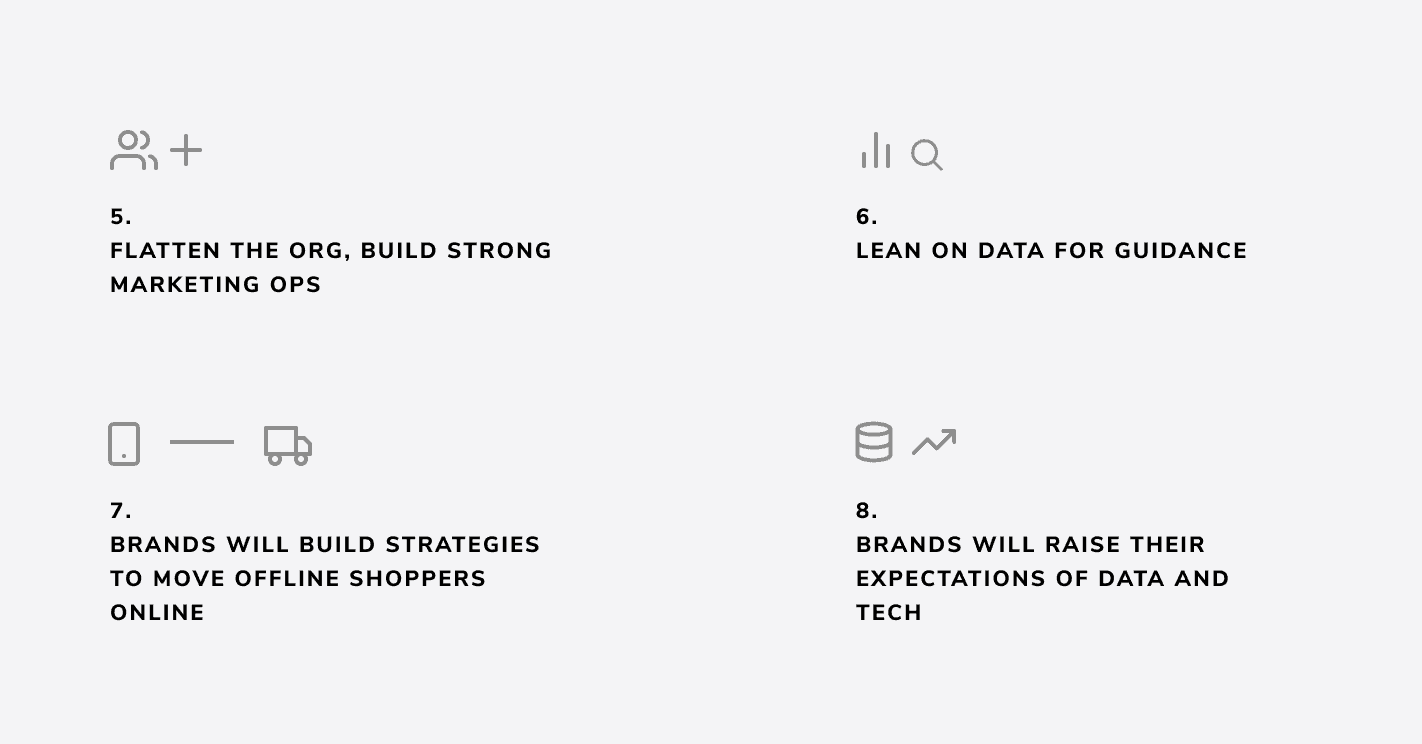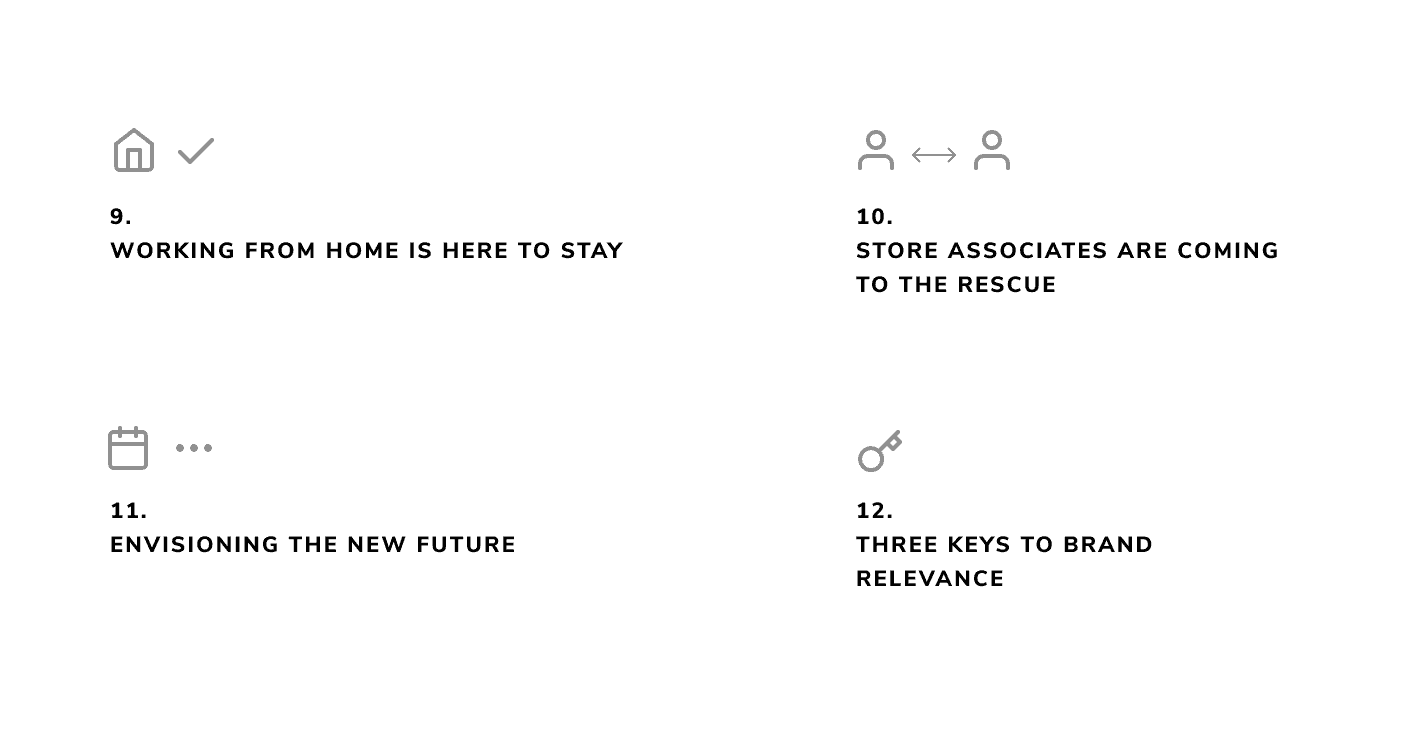15 Tips to Improve Customer Experience

15 Marketing Insights That Brands Can Leverage To Win At Customer Experiences

Nearly every organization says it cares about customer experience. Given technology’s constant influence on consumer behavior, and people’s reliance on smartphones, brands have decided to create personalized customer experiences for today’s consumers based on individual intent. These experiences should be customized, relevant, and seamless.
While shelter-in-place orders are slowly starting to lift, the way consumer shifts their shopping behaviors during the pandemic is historic. We worked with industry leaders to discuss how they are adapting to manage cx and meet their customer’s rapidly changing needs. Whether you’re in e-commerce, hospitality, manufacturer, or service provider, these insightful takeaways are invaluable. These insights are great for short term strategies for emerging from the crisis stronger.

1. Martech Stacks Will Streamline
Today’s martech stacks are also built out with a channel bias. The result is “frankenstacks” loaded with point solutions, many of them redundant. And more and more time and resource is invested in systems integrations, trying to get point systems to pass data back and forth to each other. Increasingly, marketers will turn to strategies and systems-such as CDPs-that facilitate centralizing their customer data and customer insights. This will open up the opportunity for marketing departments to rationalize their stacks. Eliminating redundant tools, and stripping away systems that were designed to support prior business models.
In a time when everyone must take great care with how they invest company resources, every campaign, every tactic and every tool matters. Not only will streamlining preserve much-needed cash for brands, but it will enable the business agility they need to succeed and thrive going forward.
2. Brands Are Listening to Customers in New Ways
Customers are also experiencing unique and unprecedented challenges in their lives. And each customer has a differing relationship with-and expectations of-the brands they patronize. That’s why listening to customers about their wants and needs, and adapting the customer experience accordingly, is more important than ever before. For instance, a number of brands are turning to social media to observe and engage in conversations-gathering real-time insights into customer opinions and needs. They’re also using those same channels to respond rapidly. Tactics include active solicitation of feedback via surveys and polling, as well as monitoring sentiment on social media, and quickly adjusting messaging and tactics in response to positive and critical customer feedback.
3. Brand Authenticity Is The Long Game
Consumers will look back and ask themselves if the brand understood them, related to them, and helped them with what they needed during this time of crisis. The need for connection with the brand will remain strong as the crisis subsides. Brands will reconsider how they and their products show up in the lives of their customers. Instead of merchandise first, mobile-first, digital-first, they’ll be thinking customers first.
4. Consumers Will Prioritize Experiences More Than Ever
The trend for some time has been that consumers have placed greater value on experiences over product. This crisis will accelerate it. Customers are now adapting to mobile ordering and curbside pickup, and many of them will continue with this behavior post-crisis. Many consumers will also revert to their previous shopping behaviors, but it’s likely that the decline of malls will accelerate as shoppers opt for more contemporary in-person formats.

5. Flatten the Org, Build Strong Marketing Ops
A strong marketing ops function is key. If you don’t have marketing ops, build a tiger team by pulling resources from finance, brand, and technology. Re-examine your org structure, processes and tech. Identify gaps, define what needs to be revamped to support responsiveness and agility, and then execute.

RECOMMENDED CONTENT
Five Pillars of a Successful Changement Management Process for CDP Initiatives
6. Lean on Data for Guidance
No one can tell you from past experience or from personal observation exactly what’s happening with customer behavior right now. It’s too new, too big, and moving too fast. But you need to know so you can respond optimally. Your data is the best-and likely only-way to do that. But if your teams don’t have visibility across channels, customer segments and lines of business, they’re flying blind.
Everyone who’s an agent of change has faced resistance to breaking down silos. Now’s the time to make another go at it. Break down barriers to get everyone empowered with the data they need, and then lean on that data to guide your actions.
7. Brands Will Build Strategies to Move Offline Shoppers Online
For some time, the talking points have been to move away from channel-first to customer-first. Now, an entire channel-brick and mortar-went down practically overnight. For omnichannel brands where knowledge of the customer is an asset independent of channel, your data still stands. Brands will use their depth of knowledge of the customer as a bridge to connect in new ways.
This can be done by first building out an engagement strategy along three tracks-thinking about your historically 1)omnichannel, 2)multichannel and 3)store-only shoppers-and creating a plan for each group. Migrating store-only shoppers to online will be the biggest challenge. Look to social media as an effective way to begin increasing engagement with this group.
8. Brands Will Raise Their Expectations of Data and Tech
Knowing the customer and having the agility to serve their individual and changing needs is critical going forward. Data is the linchpin-and data about customers and their behavior needs to flow through every system and across every department to make it work.
Today, many marketing initiatives have built-in channel bias in that their KPIs roll up to the channel and not to the customer. In the future, marketers will build ground-up journeys that are channel-agnostic, and take into account the delivery capability of every part of the organization. You can come up with a great new promotion, but will the operations be there to fulfill the orders on promoted items?
So before looking at tech or investing in tech, brands will put in the work to make sure their data strategies are in order. Then, they’re going to expect more from their technology in terms of how it supports their data strategy and orchestrates and activates that data in a customer-centric manner.

9. Working From Home is Here to Stay
Many consumers will be working from home for the foreseeable future. As will many of us marketers. Brands will take more advantage of the fact that certain teams can work just as effectively-or even more effectively-in remote settings. Take content creation, for instance: editorial, content and digital can all be done remotely. For writers, an office is a much less productive environment (with constant questions and meetings) than their individual remote workspace where they can intently focus on delivering relevant, valuable content.
The tools and technology exist for remote work and collaboration. The effort will lie in the cultural shift necessary to support it and drive it to succeed. For executives, remote work will likely prove a greater challenge to their leadership style. But many existing management techniques, from 1:1 meetings to group lunches and happy hours can successfully be replicated over videoconferencing. This is a new frontier-but brands can and will persevere, and also find opportunities for new growth.
10. Store Associates are Coming to The Rescue
Relationships between associates and customers are also proving an invaluable asset. Though stores are closed, associates are working diligently to maintain customer relationships via phone and online engagement. Brands are actively shaping their communications strategies and customer experience based on direct feedback obtained and relayed by associates.
11. Envisioning the New Future
Two of the main ways we get together with friends and loved ones, restaurants and shopping, will undergo major and likely permanent transformations. What will socializing look like? What will weddings look like? What will your brand add to that equation? One of the leaders of the fundamental task can take on right now-while we’re all locked up in our houses-is thinking creatively about what the future will look like, and helping shape how we’ll all live it.
12. Three Keys to Brand Relevance
- Rethink Messaging. Many brands are yet to shift messaging and are still talking about growth. Messages should emphasize empathy, acknowledging the customer’s pains and communicating how the brand is helping.
- Offer Solutions. Brands should move from selling a product to providing a solution, and being helpful, as opposed to opportunistic.
- Be Ready to Pivot. Many brands are consumed with how to slash budget and downsize staff. But brands on track to overcome are successfully pivoting the entire organization to solve new challenges.

13. Customer Obsession is the Foundation
It all begins with shifting focus away from product, inventory and channels. Rather, brands should become customer-obsessed. This means truly knowing the customer-not simply their “stats and facts”-but what are they going through, what is their emotional state? How are they trying to keep their families healthy, safe, and fed?
Next, brands shouldn’t jump to selling the solution. Rather, they should deeply understand the problem and convey that deeper and differentiated understanding of the problem to the market. Lastly, brands must find a way to convey that the customer will be personally transformed by adopting the solution.
14. Going From Analog to Digital in Days
Brands and businesses of every type are working to increase their digital servicing capacity to most effectively and efficiently serve customers during the crisis.
Perhaps the most significant and rapid digital transformation, however, is happening in the education sector.
15. Listening to Signals
Understanding customer needs-and being ready to serve them at scale-requires listening to signals. Our panelists described some of the key data to which businesses must be attuned as they manage the crisis and make plans to emerge from it. The data falls into two categories: Internal + External
1. Internal data generated by the operational systems within your enterprise-key areas of listening for signals include:
- Demand data – by segment, category and geography, to understand what products and services customers need, and where
- Channel, journey and experience data – to understand how effectively the customer is being served through their channels of choice
- Supply chain and inventory management data – to manage availability in-channel, relative to demand
- Promotion optimization data, especially as companies use promotions to manage shifts in demand and free up capital
2. External data supplied by third parties or from public sources-key areas of listening for signals include:
- Consumer behavior and demand data – to understand how behaviors and spend are shifting with and across categories and sectors
- Public health data – to understand where different geographies are along the curve as well as government mandates that may impact operations
- Government-supplied statistics and data – to measure macroeconomic conditions to understand, for example, when to prepare for inventory increases and reopening
If you missed our April series live discussion, make sure to stay tuned to what we have coming in June.





